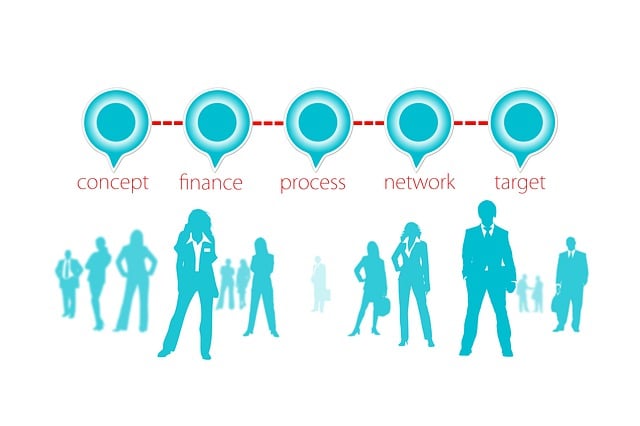Capital needs are the financial resources required for business operations, growth, and expansion, including short-term working capital and long-term investments. External factors like market conditions, regulations, and technology impact these needs. Businesses should start with an internal evaluation of operations and financial health, prioritizing capital allocation to key initiatives. Accurate balancing involves forecasting future growth and expenses using historical data and market analysis, adapting strategies as needed. Entrepreneurs must embrace strategic planning tools for holistic, long-term stability by effectively managing capital needs.
“Unraveling your business’s capital needs is a critical step for sustainable growth. This comprehensive guide navigates the complex landscape of assessing capital requirements, offering insights into defining and categorizing these needs. We explore external factors that shape capital decisions and provide an in-depth internal assessment framework. Learn to forecast expenses and future growth prospects while balancing capital needs through strategic tools. By the end, you’ll be equipped to make informed choices, ensuring your business thrives.”
- Understanding Capital Needs: Definitions and Types
- External Factors Influencing Capital Requirements
- Internal Assessment: Analyzing Business Operations
- Forecasting Future Growth and Expenses
- Balancing Capital Needs: Strategies and Tools
Understanding Capital Needs: Definitions and Types

Understanding Capital Needs: Definitions and Types
Capital needs refer to the financial resources a business requires to fund its operations, growth, or expansion. It’s essentially about balancing short-term working capital with long-term investment requirements. Working capital covers day-to-day expenses such as inventory, accounts payable, and operational costs. In contrast, capital investments include purchasing new equipment, expanding facilities, or developing technology that supports future growth.
There are various types of capital needs: immediate, short-term, and long-term. Immediate capital needs are those required to maintain current operations, like paying bills or restocking inventory. Short-term capital needs fund seasonal fluctuations or minor expansions. Long-term capital needs support significant business transformations, such as entering new markets or developing cutting-edge products, which can take several years to yield a return. Balancing these different types of capital needs is crucial for any business’s financial health and sustainability.
External Factors Influencing Capital Requirements

External factors play a significant role in determining a business’s capital requirements, often adding complexity to the process of balancing capital needs. Market conditions, for instance, can dramatically impact cash flow and investment opportunities. A robust economy may open doors to expansion and diversification, while a recession might force businesses to conserve capital and focus on cost-cutting measures.
Regulatory changes and technological advancements are also external factors that influence capital planning. New laws and regulations can either increase or decrease compliance costs, affecting the overall financial health of a business. Similarly, rapid technological changes may necessitate significant investments in R&D, digital infrastructure, and training to stay competitive in the market.
Internal Assessment: Analyzing Business Operations

To accurately assess your business’s capital needs, begin by conducting a thorough internal assessment. This involves critically examining your company’s operations and understanding its current financial standing. Analyze key areas such as revenue streams, cost structures, growth plans, and existing assets. By doing so, you can identify where investments are required to sustain or expand operations effectively.
For instance, look for bottlenecks in production processes that might hinder growth. Evaluate if additional funding is needed for research and development to stay competitive. Also, consider capital requirements for upgrading technology or expanding infrastructure. Balancing capital needs means prioritizing investments that drive the most significant impact on your business’s future prospects.
Forecasting Future Growth and Expenses

To accurately assess a business’s capital needs, forecasting future growth and expenses is essential. This involves evaluating both short-term and long-term financial projections. Start by analyzing historical trends to predict ongoing operational costs and potential revenue streams. Consider market dynamics, industry changes, and competitive landscape to anticipate any significant shifts in spending. Inflation rates and economic forecasts should also be factored in to ensure realistic budget planning.
Balancing capital needs requires a strategic approach. Assess where investments can drive the most impactful growth while minimizing financial strain. Prioritize areas that will yield the highest returns, such as expanding product lines, enhancing technology, or entering new markets. Regularly review and update these forecasts to adapt to evolving business conditions, ensuring your capital allocation strategies remain aligned with realistic goals.
Balancing Capital Needs: Strategies and Tools

Balancing capital needs is a delicate art that requires careful strategic planning and the right tools. Many businesses struggle with this aspect, often prioritizing short-term gains over long-term stability. To navigate this challenge effectively, entrepreneurs must adopt a holistic approach, considering both current operational demands and future growth aspirations. One strategy involves creating a detailed financial forecast, projecting cash flow patterns, and identifying potential capital requirements at various stages of business development.
Tools such as break-even analysis, cash flow modeling, and scenario planning play a pivotal role in achieving this balance. Break-even analysis helps determine the sales volume needed to cover fixed and variable costs, enabling businesses to set realistic sales targets. Cash flow modeling allows entrepreneurs to simulate different scenarios, ensuring they have sufficient capital to meet obligations during peak demand periods or unexpected crises. Additionally, scenario planning involves creating multiple financial models based on varying assumptions, helping businesses prepare for both optimal and challenging market conditions.






